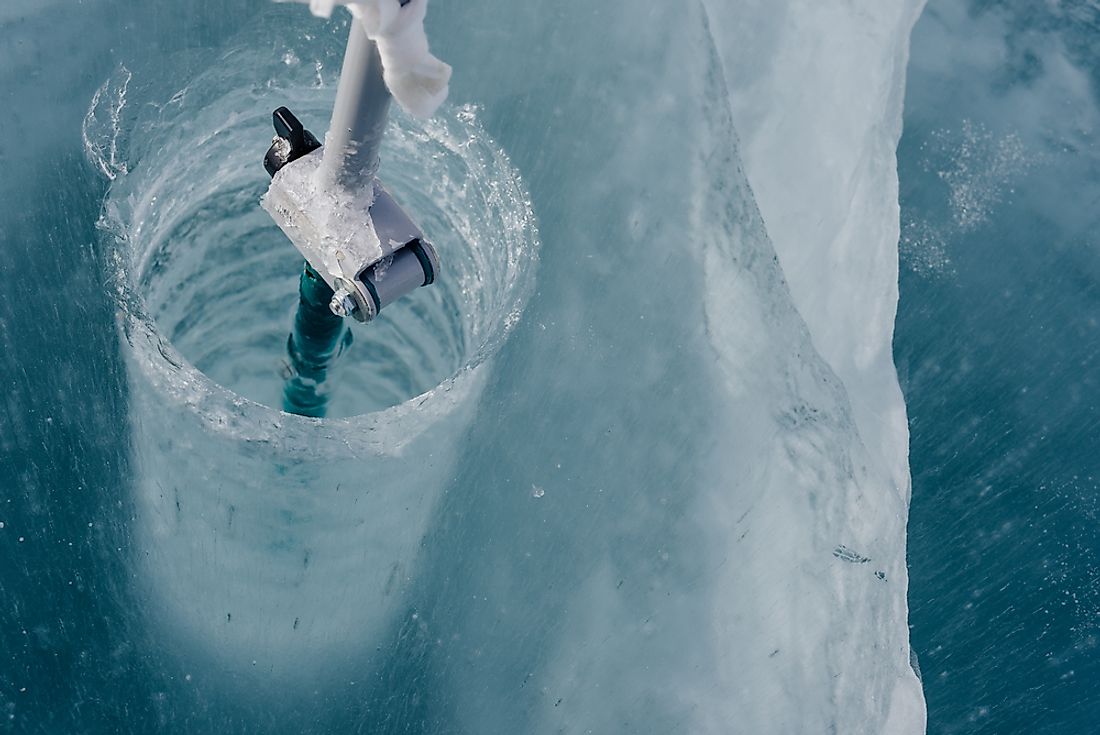What Is Ice Drilling?

Polar Regions and certain alpine areas are too cold that snowfall accumulates over time and build up to form a glacier. As the surface snow gets buried, over time it is compressed to form a solid ice which carries with it some important information such as the climate and when the snow originally fell. The information can be obtained from the snow by drilling down into the glacier. In the past three decades, several ice cores have been drilled to study the past climate. Ice cores are retrieved from glaciated regions of the earth ranging from the tropics to the poles. This article explains what ice drilling is, its history, and its impact on the environment.
Ice Drilling
Ice drilling takes place mainly in the Polar Regions or high mountains and is often done by scientists who want to obtain information on the Earth’s climate or to access what is beneath the ice. Holes are drilled on the glacier or ice sheet using specialized equipment and can be as small as few centimeters or as large as 3 kilometers. Once the hole is drilled, instruments are placed inside the holes to record pressure, temperature, the direction of movement, speed, and other needed data. Ice driller mainly targets the ice core which retains much of the environmental information about the time the snow that makes up the core fell. Some of the hand equipment that can be used to drill ice include spoon-borer, non-coring auger, coring auger, and piston drill. Other types of drills include thermal drills, autonomous probe, and snow samplers.
History of Ice Drilling
Ice drilling for scientific research started in 1840 when Louis Agassiz tried to drill through a glacier in the Alps. By then it was not clear for the scientific community as to whether glaciers flowed or not. Agassiz was motivated to drill through the ice on Unteraargletcher following claims by Franz Hugo that a boulder had moved down 1315 meters between 1827 and 1836. He first visited the area in 1839 and returned in 1840, carrying with him an iron drilling rod which was 25 feet long. He dug several holes in the area with one reaching a depth of 20 feet. His flow markers did not yield much as ice in the area had melted.
The use of rotary drills in ice drilling was adopted in the 1890s while thermal drilling was introduced in the 1940s. The drilling of ice core to obtain information begun in the 1950s, leading to the increased ice drilling activities. The ice sheet in Greenland was penetrated for the first time in 1966 when a 1,388-meter hole reaching the bedrock was drilled. The hole was drilled using both the electrochemical and thermal drilling techniques.
Environmental Impact of Ice Drilling
While scientific questions can only be answered by ice drilling, it is without a doubt that the activity is harmful to the environment and the glacier itself. The drilling technology remains harmful to the environment. In the Antarctic, several environmental impacts have been associated with ice drilling. The sources of these impacts include construction of subsurface trenches and drilling fluids. The drilling fluids prevent the holes from closure and prevent the ice core from developing brittleness. However, the drilling fluids can contaminate air and cause health complications if inhaled. Although the introduction of low-temperature drilling fluid is considered a solution, not all are environmentally friendly and can also contaminate the air. Ice drilling also leads to the melting of the ice sheet and the destruction of ice core which are necessary for future scientific research.











